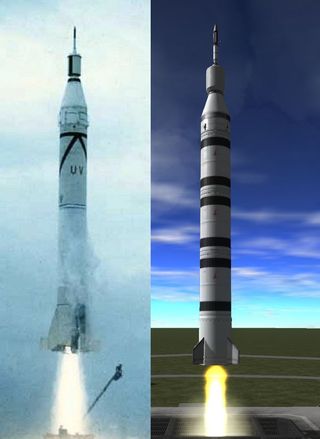
Juno I rocket
Kerbal Space Program has an incredible editor that lets you build spaceships, launch them into orbit and then pilot them around the solar system. A lot of the fun comes from creating your own machines, but the editor is so good that you can create convincing replicas of historical space vessels. Let Luis Villazon take you through a bunch of his favourites, with tips on how to build them. First, the towering Juno 1.
The Juno I rocket was made from a liquid-fuelled Redstone ballistic missile, fitted with a washing-machine-sized drum on top. The drum contained a ring of 11 solid rocket boosters surrounding a core of three more. In Kerbal Space Program, the Procedural Parts mod allows you to make fuel tanks and boosters any size you want, so you can build 1:1 scale replicas. The Procedural Fairings mod forms the outer shell of the drum.
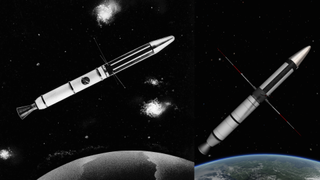
Explorer 1
America’s first satellite in space was launched on the Juno I rocket, just 90 days after the Soviets orbited Sputnik 1. The rear half is actually the solid rocket motor of the fourth stage. The KSP version uses telescopic antennas but the real satellite used flexible whip antennas that were held out by centrifugal force as Explorer 1 rotated.
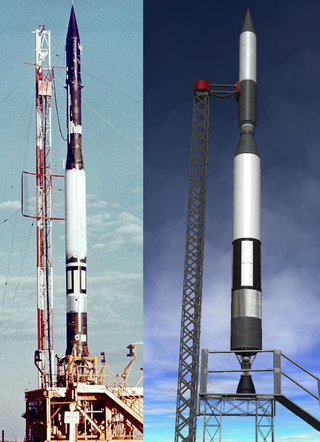
Vanguard rocket
Vanguard was tiny compared to Juno; the payload in the nosecone was only the size of a grapefruit. For the main engine I used a WildCat-V from the KW Rocketry mod. The second stage motor is the stock Rockomax 48-7S and the top stage is a solid rocket motor, created with Procedural Parts and hidden behind a Procedural Fairing. To make the gantry, start with the launch clamp and then attach structural plates and I-beams to that. The horizontal railings are struts.
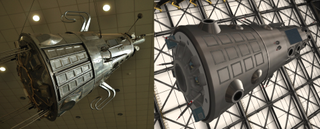
Sputnik 3
Sputnik 3 was a 3.5m tall, orbiting laboratory launched by the USSR in 1958. Russian spacecraft have lots of fiddly details and curved bit that are hard to represent in KSP. The grid pattern on the side (which are the doors for the cooling louvres) is made by rotating cubic octagonal struts, so that only the base is visible on the outside.
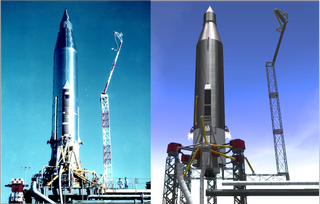
Atlas rocket
The SM-65B Atlas was America’s first intercontinental ballistic missile. This one uses Rockomax 24-77 engines on the sides as vernier motors, and dummy fuel lines, just for looks. The ducting with the pointed top, that runs down the bottom half is made from KW Rocketry batteries. The gantry is just a bunch of girders, fuel lines and Procedural Parts structural cylinders all stuck together.
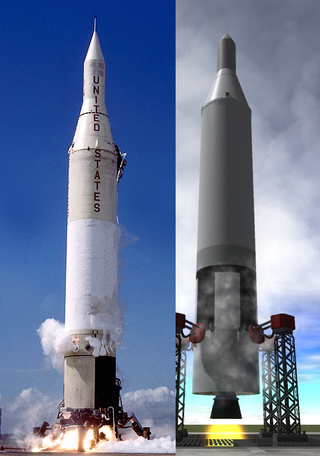
Juno II rocket
The larger version of the Juno I has the same rotating second/third/fourth stage assembly, but this time it’s enclosed in a procedural fairing. The lower section is an interstage decoupler from KW Rocketry. Because this is hollow, you can use it to hide the upper section of the rocket engine.
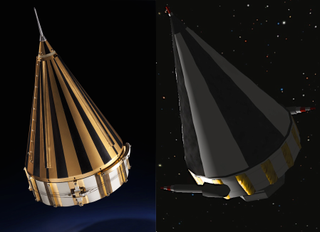
Pioneer 4
Some of the early satellites are so tiny that it can break the KSP physics engine. Pioneer 4 only weighed 6.1kg and just the thrust from the small decoupler was enough to send our model out to the orbit of Jool! The Communotron-16 antennas at the bottom are meant to represent the weights attached to wires that were spooled out to allow the real Pioneer 4 to de-spin itself.
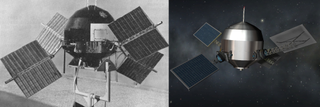
Explorer 6
Explorer 6 took the first photo of Earth from space, albeit an incredibly blurry and incomplete one. The solar panels were on fixed paddles that sprung into place when the fairing was jettisoned, angled so that one of them would always catch some sun, whichever way the satellite faced. Ours uses the Infernal Robotics mod to unfold and rotate them into place.
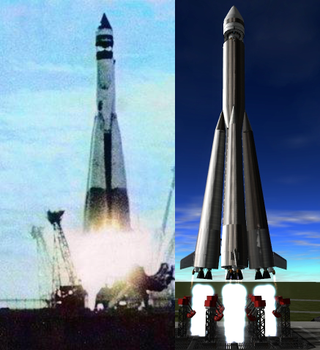
Vostok 8K72 rocket
This is an upgraded version of the R-7 rocket that carried Sputnik into space, with a third stage stuck on the top. Each of the five booster cores uses 4 Wildcat-V engines from KW Rocketry, clustered together with two Rockomax 24-77s as vernier engines on the outer boosters, and 4 of them on the central one. That’s 32 engines in the first stage!

Luna 2
Looking like a spikier Sputnik 1, Luna 2 was the first probe to reach the Moon. Unfortunately it reached it at 7,400mph and was vaporised on impact. The central spike and the smaller lumps and bumps are Procedural Parts cones. The top antenna is a Communotron-16 but the smaller ones are from 4 different MechJeb parts, clipped within the main probe body.
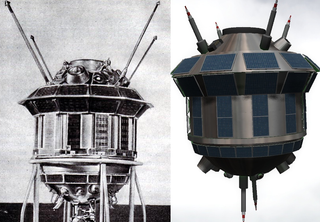
Luna 3
Russia’s next moonshot sent a probe around the far side of the Moon to take pictures. Luna 3 had its own little photo lab on board to develop the pictures, scan them and beam the images back to Earth. The little bumps on the bottom are cold nitrogen gas jets for attitude control, modelled here using linear RCS ports. The only way to get solar panels this small is using the Tweak Scale mod that lets you resize stock parts.
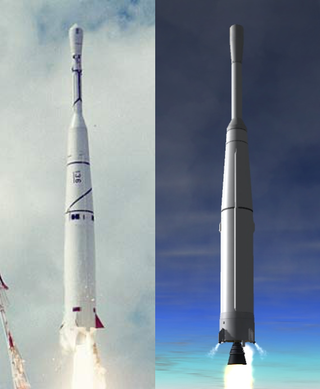
Thor-Able-2 rocket
The Thor missile was an intermediate-range ballistic missile that was briefly stationed in the UK in the 1960s. Its career as a space launcher was much longer though and the modern Delta II rocket is descended from the Thor. The Able-2 upper stage has a procedural fairing at the top for the payload and another one at the bottom to create the conical interstage section and hide the stock engine fairing. The ‘fuel duct’ down the side is a series of procedural cylinders clipped into the side of the main fuel tank.
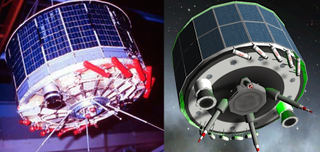
TIROS 1
The first weather satellite was a simple drum covered in solar panels with a pair of television cameras on the bottom. It was spin stabilised, but magnetic drag with the Earth caused it to gradually lose its spin, so it was fitted with 5 pairs of solid rocket motors. Once a fortnight, NASA would instruct the satellite to fire a pair and it would spin back up to speed. Our version uses sepratrons for this and, surprisingly, they work quite well.
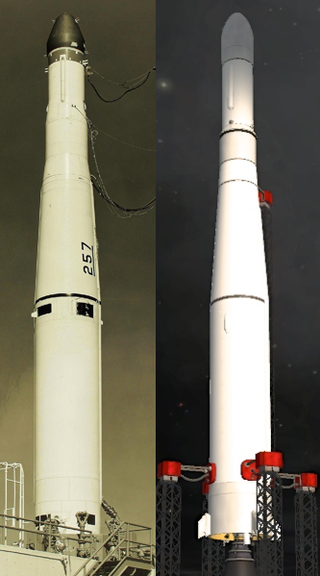
Thor-Ablestar rocket
The next upgrade to the Thor-Able series was Thor-Ablestar. This had cold gas jets that allowed attitude control during the coast phase and kept the liquid fuel settled at the bottom of the tank in zero-g. This meant that the Ablestar engine could be restarted in flight for more precise control over the final orbit. Ablestar was the first rocket that could do this.
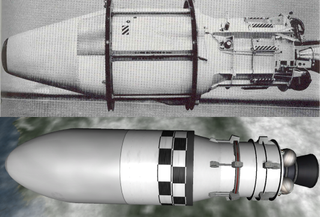
Discoverer 13
The fact that the first object to be recovered from orbit was called Discoverer-13, should give you an idea of how many failures the US had along the way. This was a dummy run for the first spy satellites. The return canister that would later contain the exposed film was ejected from the nose cone at the end of the mission.
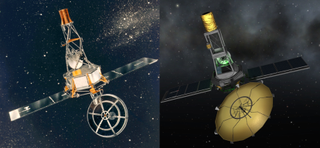
Mariner 2
The first planetary flyby was in 1962 when Mariner 2 made it to Venus. Our version uses solar panels stuck to structural panels and hinged with Infernal Robotics. The gold cylinder on the top uses one of the built-in textures from Procedural Parts. It’s meant to be a magnetometer.
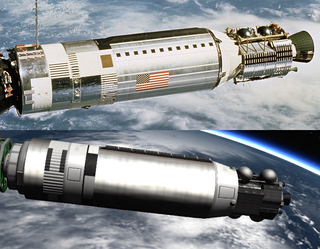
Agena-D upper stage
The improved Agena-D upper stage was much bigger than the Agena-B used for Mariner 2. The pattern on the main tank is made by stacking short cylinders together, each with a different texture from Procedural Parts. The complicated engine section on the right uses stock girder segments, with KW Rocketry battery modules and spherical RCS tanks clipped into them.
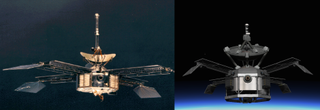
Mariner 4
Mariner 4 needed twice as many solar panels as Mariner 2 because it went to Mars, which is much further from the sun. The fixed dish antenna is actually an adaptor section from KW Rocketry. The tall mast behind it uses the telescopic pistons from Infernal Robotics. The body is an octagonal girder section with a procedural fuel tank clipped into it, and a linear RCS port on the side as the probe’s hydrazine thruster.
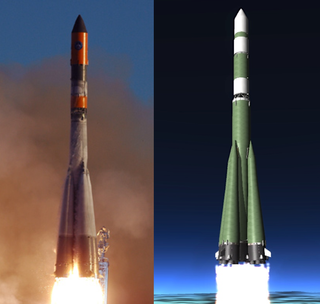
Molniya-M rocket
The next iteration of the R-7 rocket family used four stages instead of three. The third stage used a modified version of the engines from the booster stage and weighed 24.8t. The fourth stage weighed 6.7t, of which 700kg was a detachable ring at the rear with solid rocket ullage motors to settle the fuel in the main engine tanks prior to ignition. All of this is a lot easier to model in KSP than finding a mod that allows orange fairings!
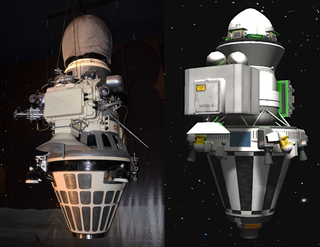
Luna 9
A classic of Russian spacecraft design. Luna 9 bristles with antennas, battery packs, radar altimeters and other greeble. I used solar panels in their retracted state for some of the boxes and LV-1R motors for the four vernier engines. Luna 9 descended to just a few metres above the surface of the moon and then jettisoned the top section, which used airbags to bounce safely to the ground. You can use the Umbra Space Industries Airbag mod to simulate this.

PC Gamer is the global authority on PC games—starting in 1993 with the magazine, and then in 2010 with this website you're currently reading. We have writers across the US, Canada, UK and Australia, who you can read about here.
Most Popular

